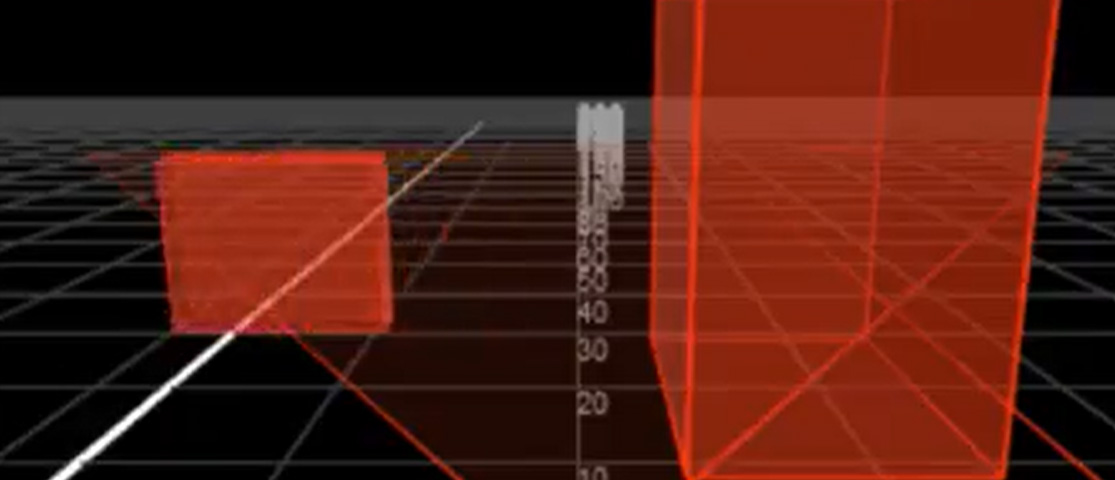
Content
Find out how we effectively solve challenges in software development and validation for automated machines thanks to our LSAD HIL. With virtual test scenarios, realistic simulations and comprehensive testing options, our system ensures accelerated development, greater security and better software. Immerse yourself in the future of efficient testing in the world of Low Speed Automated Driving.
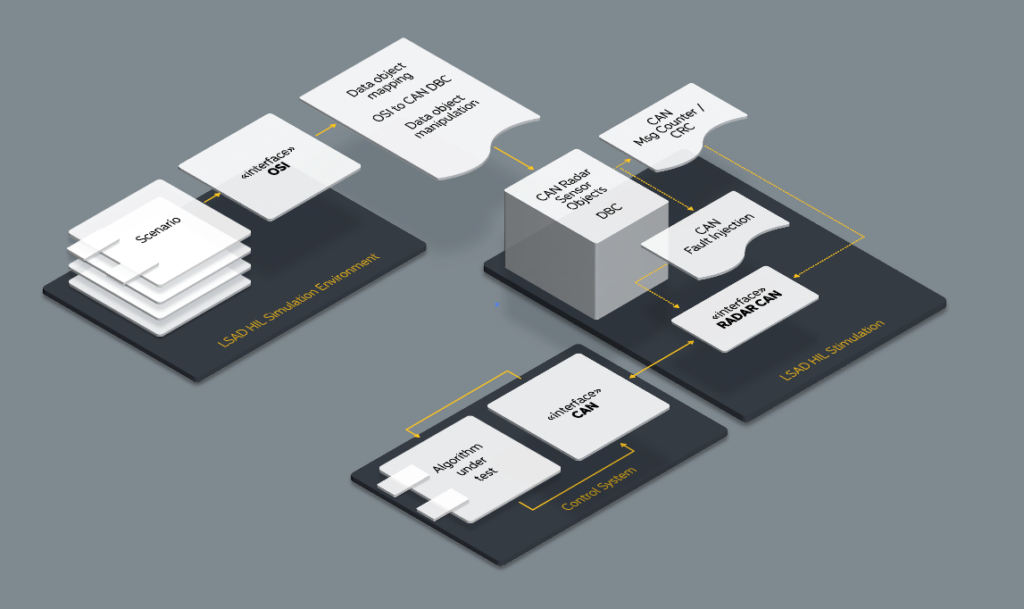
The challenge: Efficient testing of automated machines
Some of you are probably familiar with the situation: I want to test software for an automated machine. I load the latest software onto the machine, do a check in the workshop. Everything works as intended. Now it’s time to test more complex situations. So I drive the machine to the test site, which is right next to the company. It’s a dead end, so I can test without being disturbed. For my test, I need two parked vehicles and a cyclist coming from the left behind the parked vehicles on a collision course with my bike on the road. At the same time, I need a pedestrian to cross a painted crosswalk a little further ahead. Fortunately, the interns are free at the moment and play along. All that’s missing now is some fog to make visibility worse. Then I have to simulate the failure of the radar system due to contamination. For the test repetition in the dark, everyone stays until after sunset. Suddenly an error occurs in the software. The action is canceled in order to repeat all tests in the following week.
Does that sound expensive and time-consuming? That’s what it is. In addition, the test scenario described is very arbitrary and therefore almost impossible to replicate. The whole thing becomes even more difficult when the only prototype is exhibited at a trade fair or the chassis is modified. Development is already at a standstill.
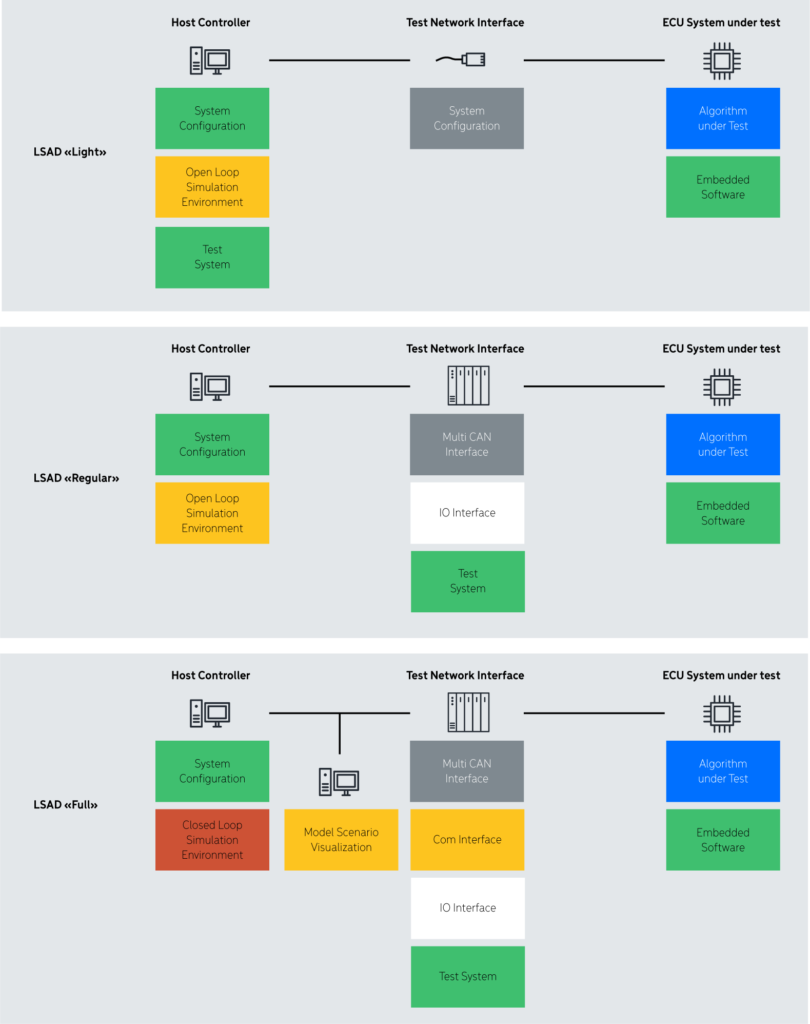
System Uebersicht Lsad Hil
Simulation as a solution
How can I now advance software development and, above all, software validation independently of the prototype without taking technical risks?
One possible solution is the LSAD HIL from Durot Electric. The LSAD HIL offers an easy way to virtually test the functional requirements for LSAD systems. The corresponding test scenarios are created for the various functional requirements, which are based on the ISO 22737 standard for intelligent transportation systems(low-speed automated driving). The objects and sensors configured in the test scenarios are mapped to the HIL simulation interface at simulation runtime and can thus stimulate the controller interface of the “system under test”. The algorithm can therefore be tested at an early stage of development in accordance with the normative requirements. Errors are also detected at an early stage and can be rectified more easily. The LSAD HIL is also able to carry out automated tests and provide the reactions of the application software and the test results in a detailed test report.
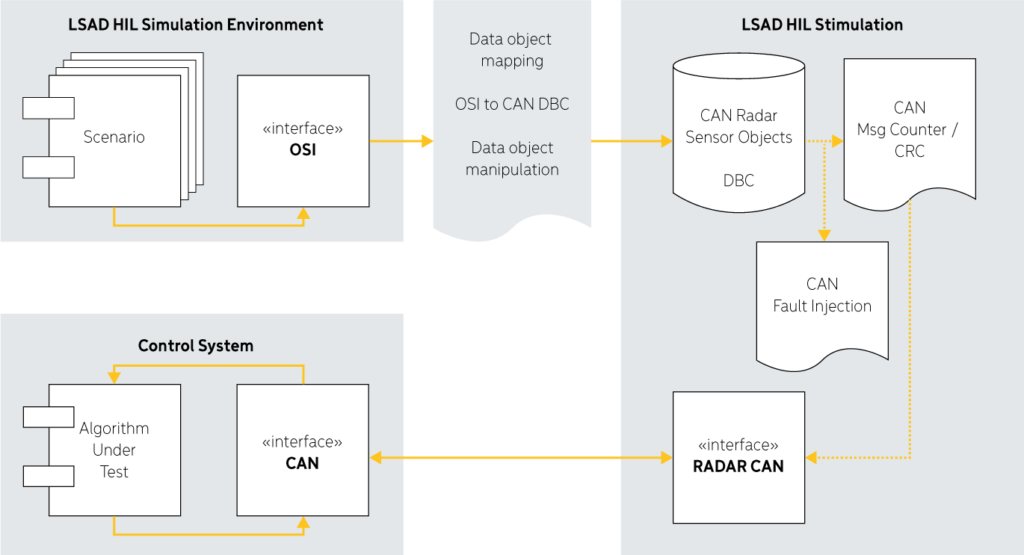
Weiteres Funktions Beispiel Can Radar Daten Lsad Hil
By stimulating and simulating the LSAD HIL and the control systems, the I/O configurations of the system can be tested in addition to the software functions. This simplifies commissioning on the live system and shortens troubleshooting on the hardware. Functional enhancements or hotfixes can be checked quickly and easily with the LASD HIL, thanks to the reusability of the test cases, before they have to be tested on the LSAD system. Data from the simulation environment can be manipulated at runtime via the simulation interface. The LSAD HIL Stimulation Interface also allows the I/O signals to be manipulated before they are forwarded to the control system. Due to the structure of the LSAD HIL, errors can be generated in object or sensor data (simulation) as well as in the data transfer (stimulation). Recorder data or trace recordings can be used with the stimulation interface of the LSAD HIL for any repetition of virtual test drives.
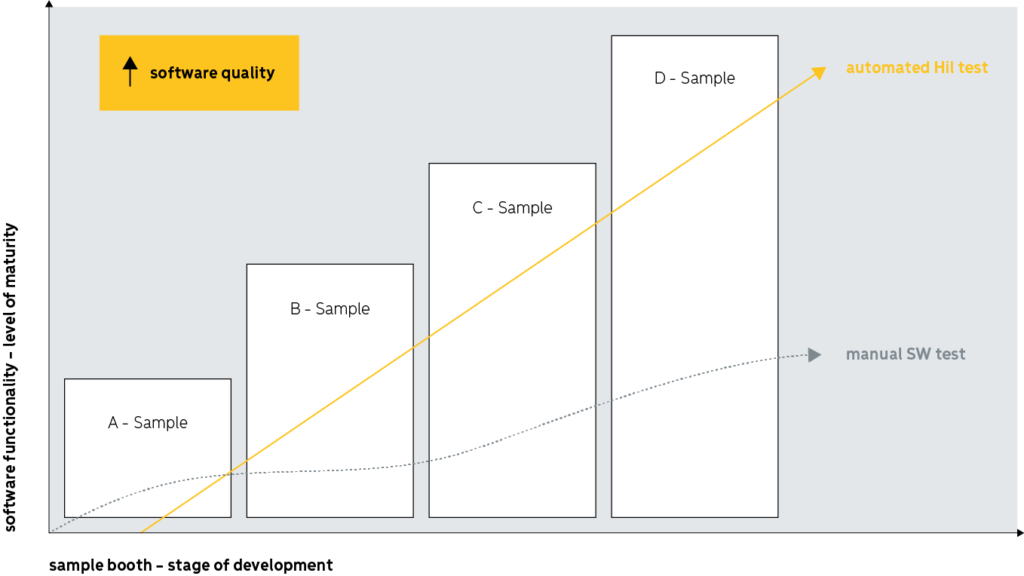
Here are some of the advantages of our LSAD HIL:
- No prototype is required for the tests. This saves costs.
- Potentially dangerous situations can be avoided. This increases the safety of employees.
- Tests are possible even before a prototype exists. This shortens the timeto-market, as unforeseen events are prevented.
- It can be tested as often as required, regardless of the availability of the prototype. This increases the software quality.
- Any environmental influences can be simulated, which increases the stability of the software.
- All tests can be documented as proof of safety. This reduces the effort required to create the safety case.
- All tests can be reused. This means that a high level of testing is achieved for each software version even before the software is put into operation on the prototype for the first time.
Testing is the norm
ISO 22737:2021 (E)
- Description ISO 22737
- LSAD Low-speed automated driving, intelligent transportation systems or LSAD systems are systems for automated driving (SAE Level 4) at low speeds (up to 32 km/h) on predefined routes. In contrast to fully autonomous systems, the trajectory is defined before the start of a journey. This route is the distance to be traveled by the LSAD system driven vehicle from a starting point to one (or more) destination(s).
- Why do we use ISO 22737?
- ISO 22737 includes requirements for operational design, system requirements, minimum performance requirements and requirements for performance and test procedures. The ISO standard does not specify any sensor technology that is available in vehicles powered by LSAD systems.
- An essential component of the Norn is the hazardous situations defined therein, in which the position, orientation and movement of an obstacle (e.g. cyclist, pedestrian, other vehicles, etc.) relative to the orientation and movement of the vehicle driven by the LSAD system can lead to an imminent collision. The standard also places a very strong focus on vulnerable road users, their protection and thus the functional safety of LSAD systems.
